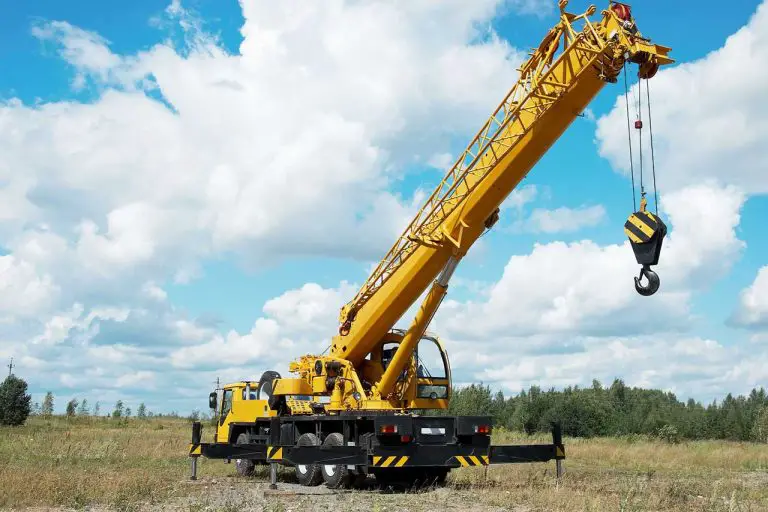Cranes are integral to construction sites, enabling workers to lift and transport heavy materials easily. However, operating these massive machines requires high skill, attention, and adherence to safety protocols. This article will explore the best practices for safe crane operations on the job site.
Understanding the Basics of Crane Safety
Before we dive headfirst into the complex world of crane safety, it's essential to understand the basics. Cranes, due to their size, weight, and operational complexity, pose a significant safety risk if not handled correctly. Accidents can result in severe injuries or fatalities and substantial financial losses.
Hence, every worker involved in crane operations must have adequate training and knowledge about the equipment. They should be aware of the potential hazards and know how to mitigate them.
Key Elements for Ensuring Safe Crane Operations
Regular Maintenance and Inspection
One of the most critical aspects of crane safety is regular maintenance and inspection. It's essential to ensure the crane is in good working condition before starting any operation. Inspections should look at the mechanical components, hydraulic systems, and electrical components. Any issues identified during these checks must be addressed immediately to prevent accidents.
Safety checks at the construction site are also crucial. The area around the crane should be clear of any obstacles that could interfere with its operation. The ground on which the crane is set up should be stable and capable of supporting the crane's weight. Moreover, the weather conditions should be favorable; operations should be halted in case of strong winds or storms.
Proper Load Handling
Proper load handling is another fundamental aspect of crane safety. Operators should never exceed the crane's maximum load capacity as it can lead to catastrophic failures. The load should be well-secured to prevent it from falling during transportation. Also, the path of the load should be clear of any workers to ensure their safety.
Training and Certification
Crane operators should undergo rigorous training and certification. They should know the crane's controls, emergency procedures, and safety protocols. Additionally, they should be physically and mentally fit, as operating a crane can be strenuous and requires a high concentration level.
Safe Crane Operation: A Checklist
- Ensure regular maintenance and inspection of the crane.
- Conduct safety checks at the construction site before starting operations.
- Never exceed the crane's maximum load capacity.
- Secure the load properly to prevent it from falling.
- Keep the path of the load clear of any workers.
- Ensure that all crane operators have undergone proper training and certification.
The Role of Crane and Equipment Rental Companies
Crane and equipment rental companies play a significant role in maintaining safety standards. They provide well-maintained, high-quality cranes and equipment, reducing the risk of mechanical failures. For instance, if you're looking for a reliable crane rental in Virginia, choose a company that prioritizing safety and quality.
Embracing Technological Advances for Crane Safety
Technology has become a crucial ally in improving crane safety. Advanced technologies like GPS tracking, load moment indicators, anti-collision systems, and remote monitoring are now being integrated into cranes to enhance their safety and efficiency.
GPS tracking allows for precise positioning of the crane, reducing the risk of accidents due to misplacement. Load moment indicators provide real-time information about the weight of the load and the crane's capacity, helping prevent overloading. Anti-collision systems can automatically detect obstacles and halt operations, avoiding potential collisions. Finally, remote monitoring allows supervisors to monitor crane operations from a safe distance, quickly identifying and addressing any issues that arise.
It's important to remember that while technology can significantly enhance safety, it doesn't replace the need for proper training and adherence to safety protocols. Technology should be seen as a tool that enhances, not replaces, traditional safety measures.
Importance of Communication in Crane Operations
Effective communication is another critical aspect of crane safety that often gets overlooked. Clear, concise communication can prevent misunderstandings that could lead to accidents.
Crane operators, ground workers, and supervisors must all be on the same page regarding the day's operations. Using established signals and protocols can help ensure effective communication. Using radios or other electronic communication devices can be beneficial in noisy environments.
Additionally, regular safety meetings can help reinforce safety protocols, discuss any concerns or issues, and keep everyone informed about changes in operations or procedures.
Creating a Culture of Safety
Beyond the practical steps and technological advancements, creating a safety culture within the organization is paramount. This means prioritizing safety at all levels, from management to each worker on the job site.
A culture of safety encourages everyone to take responsibility for their safety and the safety of others. It promotes openness and transparency, allowing workers to report potential hazards or safety concerns without fear of reprisal.
Training programs should not only focus on the technical aspects of crane operation but also emphasize the importance of safety and each worker's role in maintaining a safe work environment.
Wrapping UpSafe crane operations on the job site aren't a matter of luck; they require meticulous planning, regular maintenance, proper training, and strict adherence to safety protocols. By following these best practices, construction companies can significantly reduce the risk of accidents, ensuring the safety of their workers and smooth project execution. Always remember that there's no room for compromise when it comes to safety.
Learn more about pile driving equipment rental.





